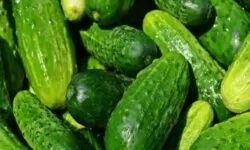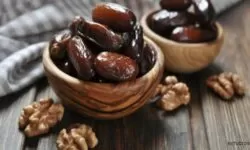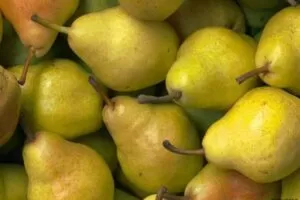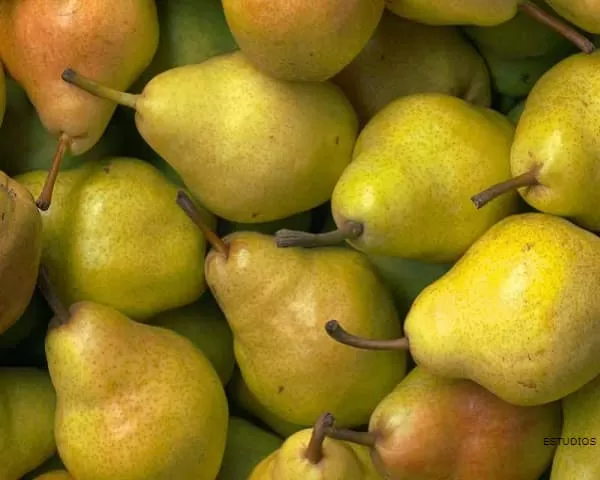The pear is one of the most common fruits, which provide many nutrients, vitamins and minerals needed for everyday life of people, also are able to maintain highly protected the human body from various diseases.
The pear, belongs to the classification of green fruits, slimming fruits, astringent fruits, fruits of the autumn, fruits for diabetics, diuretic fruits, among others, since thanks to the amount of vitamins and minerals that supply the human body it manages to be a versatile and useful fruit for different aspects and diseases that people suffer. The pear is an edible fruit, which is distinguished by being one of the best foods in terms of its pulpy flesh which is usually very sweet and juicy.
It is a fruit recognized worldwide for its high content of nutrients and unique and special flavor. It is a fruit that can be used in certain ways and can be eaten both raw and added to exquisite culinary dishes. It is a fruit that is characterized by belonging to the family of rosaceae, its skin is thin and extremely smooth, which is pastel green, although in some cases there are yellow pears, brown or red, all depending on the variety where the fruit has grown.
Among the main benefits of the pear is that it tends to have a very high nutritional value, being considered a fruit highly appreciated by people, likewise, it is characterized by intervening in natural laxative processes, it moves away the stomach constipation and it is excellent for the skin. Next, you will know a little more about this incredible fruit.
Origin of the Pear
The geographical origin of this wonderful fruit is located mainly in the eastern part of Europe, as well as in different regions of the Asian continent. However, with the passing of time, this fruit was distributed throughout all the continents. It arrived to the American continent with the colonists, who were in charge of entering these lands with some seeds in their possession, which they managed to cultivate in different regions since they took advantage of the versatility and diversity in terms of geographical conditions offered by these new lands.
It is said that the colonists first cultivated this wonderful fruit on the American continent, just to the east of the United States, where over the years its cultivation was extended thanks to its climatic condition. On the other hand, on the other side of the western United States, in what is now Washington and Oregon, since the 1800’s, pear cultivation began to prosper because it was considered one of the best areas in terms of its unique climatic conditions, which was perfect for the development of different agricultural activities.
Today, the pear is still being developed in the crops of the western United States, being one of the main countries in charge of distributing this incredible and marvelous fruit, followed by France and Belgium as producers in charge of preserving the pear crop.
Pear Properties
For its nutritional properties:
- Within its main component you get the pear is mostly in water, also highlights its high contribution in sugar, fiber, potassium and tannins, which serve astringent action, so it is considered one of the largest fruits in terms of classification of astringent fruits. In spite of everything, its content in vitamins is not as remarkable as the one of other fruits.
- The potassium that it provides to the human body is necessary for the transmission and generation of all the nervous impulse, it also works for a very normal and balanced muscular activity; the pear intervenes in the stability of the water, both inside and outside the cells in the whole body.
- It is a fruit also used as an accompaniment to salads, so it is considered a special food to include in slimming diets thanks to its high water and fiber content, also, for its low contribution in caloric content, which is ideal for people who suffer from overweight and they are difficult to reduce any excess body mass.
Because of its health properties:
- Thanks to its high content of potassium, its consumption will always be convenient for people who take diuretics that diminish the amount of this mineral, making them replace the losses of the organism. On the other hand, given its astringent character, the pear is appropriate for people who have constant diarrhea and for its diuretic effect, in case of liquid retention.
- The pear provides the body with substances called tannins, which have anti-inflammatory properties, which are responsible for drying and deflating the intestinal mucosa, making the interior of the digestive tract, which is ideal for certain digestive disorders such as ulcers, gastritis and frequent stomach pains.
- The pear does not provide enough carbohydrate and sodium, which is recommended for all those who suffer from high blood pressure, cardiovascular diseases or diabetes of different types.
- In the same way, the consumption of the pear works to stimulate the nervous system, involving a series of substances which help to maintain the proper functioning of the brain and the entire nervous system in general.
- For its part, it provides a very considerable percentage of healthy fatty acids, which favor the detoxification of the body, due to the constitution of which are compounds.
Benefits of the Pear
- It is no secret that the pear’s high nutrient content is the main health benefit it provides. Likewise, it is a fruit that, in addition to being incredibly beneficial to human health, serves for curative or therapeutic uses, thanks to all the components it possesses.
- The pear is a fruit with a high water and fiber content, which are its two main components, so it tends to be an ideal fruit in case people require low-calorie foods, promoting a healthy diet that opens the way to the desired weight reduction.
- Thanks to its fiber content, there is a component called pectin, which makes the pear an excellent fruit for the gastrointestinal system, contributing to the stable and balanced health of the digestive system through the stimulation of all peristaltic movements of the intestinal function.
- Pectin is not only in charge of stimulating the intestinal function, but also this component allows to collect all the impurities that are in the body, making them excreted and achieving a detoxification of the toxins in the body, so that the integrity of the body is not altered.
- In the same vein, due to its high water content, it exerts a purifying function, which works hard to counteract all those cases of fluid retention, since it is responsible for stimulating the mobilization of all the water compartments of the human body.
- Finally, thanks to the supply of vitamins in the B complex and vitamins C, they provide the body with a high immune system, protecting the different tissues and being an essential element as an antioxidant for the body.
Types of Pears
Among the most outstanding varieties of pears you get the following:
Christian Williams Pear
It is in charge of being an extremely big fruit, with greenish brilliant skin, changing in certain occasions to lemon yellow color when maturing. Its pulp is white, sweetened, juicy and in some cases, it is usually perfumed. You can see it more than the whole month of August and September.
Red Pear
The red pear is one of the most striking for people in terms of appearance. Its color is usually reddish and among its most frequent varieties you get the Red Bartlett, which usually resembles an egg because of its spherical shape. The red pear is not usually different from other varieties in terms of taste, since in the same way, they are usually sweet and juicy.
Green Pear
It is one of the most frequent in the markets or fruit shops. Unlike ripe pears, this one does not vary in color, since it always stays in a pastel green, which is usually very light. Among its most notable varieties is the green Bartlett; its flavor is sour with sweet sparkles. It is often seen in October, November and December.
Water Pear
It is also often known as a white pear or Aranjuez pear. It is a pear that occurs mostly on the European continent, mostly in Spain; its color is intense green, and its flavor tends to be sour with a buttery consistency. It is often used for home remedies.
Wild Pear
It is a pear different from the rest, belonging to the species of pears piyrus pinatar, usually tending to be 20 centimeters in size and is best known for its medicinal properties.
Winter Pear
It is a pear that is frequently found in Central Europe and is a fruit that varies depending on the climatic conditions in which it is found. It occurs more than all the winter months and it is one of the fruits that has the highest amount of sugars in the human body. Its flavor is attractive, tending to be both sour and sweet.
Pear Tree
The pear tree is called Pyrus Communis or pear tree, which is deciduous, extremely straight and the growth of its structure is somewhat slow. Normally it reaches 10 to 15 meters high, and its approximate life span is almost 100 years. Its crown tends to be of pyramidal structure; in its youth it grows in a rounded form and later, it acquires an oval form with the passage of the years. The trunk of the pear tree is usually high and thick, its perimeter varies between 0.5 and 1.5 meters. Its branches are extremely strong, thorny and in most cases arched, forming an angle of 45 degrees with the trunk.
Its bark is unique, because it is smooth and greenish, which over time becomes reddish or dark brown. The leaves are oval or round, with a huge brightness and in most cases contain hairs, which over the years begin to put hairless. It is a tree that gives abundant white flowers, although in certain occasions they change to pink color, and generally they require a pollinator, being able to appear in a solitary way, like in other occasions, they vary until in the same branch like 9 or 15 flowers.
Does the Pear Get You Fat ?
Like any fruit, the pear contributes to people having a balanced diet, thanks to its extremely satiating effect, in addition to the fact that it provides an infinite number of benefits that help reduce weight. For this reason and many more, the pear is not a fruit that is fattening.
The pear satisfies hunger, so it tends to be one of its qualities when it comes to losing weight, since when consumed it produces sensations of satiety in the human organism, which turns out to be more than beneficial for losing weight. This function is linked to its high levels of fiber, which helps to prolong the time in the digestive tract assimilating the food ingested. Besides that, the pear detoxifies, since thanks to its qualities in fiber and water that it possesses, it is a fruit that works as a coadjutant for the detoxification function of the human body.
Does the Pear Have Fiber ?
The pear contains fiber, moreover, within the chemical constitution of this fruit, within the main components that it possesses it is the dietetic fiber, which is a polymer composed by different carbohydrates, whose distribution and link confers insoluble properties in aqueous compounds.
One of the main functions of the dietetic fiber of the pear is that it helps to stimulate the digestive system, which favors the correct operation of all the intestinal movements with which the chyme is moved by means of the intestinal light. In itself, it has a total of 5.5 grams of fiber, which are more than perfect to fight and prevent the retention of liquids in the human body, in addition to possessing more than 80% of water in its composition, being a fruit practically free of fat.
Does the Pear Have Sugar ?
The pear contains sugar, being also characterized by its high content of nutrients, so it is extremely rare that people suffer harmful side effects because of the components of this fruit.
It is a fruit that provides the organism with a high amount of energy, due to its composition mostly in water, in addition to its high content in sugar, which gives the possibility of functioning as a supply of caloric energy within the human organism. The carbohydrates it provides through fructose and sucrose are the main factors that give the pear its sweet flavor which characterizes it.
Does the Pear Get Fat at Night ?
The pear is not fattening either by day or by night, but rather it ensures that people have a good digestion process so that they do not retain components or foods that are responsible for damaging people’s health; it is a perfect fruit and ideal for losing weight due to its high water and fiber content, which are primordial characteristics of this fruit.
Is the Pear Diuretic ?
The pear is diuretic, that’s why, thanks to its properties it will be much easier for people to lose weight, besides decreasing the blood pressure, which thanks to its consumption helps to stimulate the kidneys, making them work in a correct and efficient way.
Is the Pear Good For Digestion ?
The pear turns out to be an excellent ally for the intestinal tract and good stomach digestion, thanks to its high water and fiber content, which promotes the development of intestinal transit, making sure that no substances or components harmful to the stomach are accumulated, and expelling them correctly through the feces. It is an ideal fruit to avoid constipation and stomach pain in general.
Does the Pear Lose Weight ?
It is an ideal fruit to lose weight, since it is recommended as part of balanced diets due to its high water content and a good supply of dietary fiber, essential elements for people to lose weight effectively and healthily.
The consumption of this fruit helps to reduce the weight, because thanks to its consumption it does not imply a greater ingestion of calories to the organism, on the contrary, it helps to lose weight thanks to its nutritional values under, like the amount of water that contributes and the dietetic fiber that is consumed.
Calories of the Pear
The pear is responsible for providing the body with a total of 59 calories per 100 grams, so it is an ideal fruit for all those who want to lose weight with extremely natural and healthy food for the human body.
History of the Pear
The pear originated in the regions of Western Asia and Eastern Europe, where it had been grown mostly since extremely remote and unimaginable times. The Greeks and Romans made the cultivation of pears known and were the ones who introduced the pear into the Ebro Valley, where it is now part of China. Nowadays, Spain and the United States are two of the main countries in charge of distributing this wonderful fruit worldwide.
Topics Related to Fruits in ALPHAPEDIA

PERSIMMON: Origin, Properties and Benefits

CUCUMBER: Fruit or Vegetable. Benefits and Properties

AVOCADO: Origin, Properties, Meaning and Benefits

WATERMELON: Benefits, Properties and Contraindications

COCONUT: Benefits, Properties and Contraindications

WINTER FRUITS: Benefits and Properties
Health and Wellness Issues at ALPHAPEDIA

DATES: Benefits, Properties and Contraindications

CUCUMBER: Fruit or Vegetable. Benefits and Properties

WATERMELON: Benefits, Properties and Contraindications

WINTER FRUITS: Benefits and Properties

RASPBERRIES: Origin, Properties and Benefits

PERSIMMON: Origin, Properties and Benefits
Other Topics of Interest in ALPHAPEDIA

FREE ADMINISTRATIVE MANAGEMENT COURSE

FREE CONSORTIUM MANAGEMENT COURSE

FREE MASTER DEGREE IN EPIDEMIOLOGY

FREE DOCTORATE IN NURSING

FREE SPELLING COURSE

ECCLESIASTES 4
Images or Drawings of the Pear



